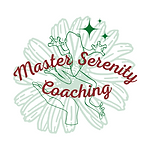Mindset: What do we control?
- Magali Steffens
- Aug 3, 2022
- 3 min read
The word “Mindset” has been first coined by the American Psychologist Carol Dweck. She has done a massive work on the subject but for practicality, here is the main understanding.
Growth versus Fixed mindset We can identify 2 types of mindsets: Growth mindset and Fixed mindset. A growth mindset is acknowledging the space for improvements. We recognize our weaknesses or limitations, but we believe that we can overcome them if we work towards it. A fixed mindset is believing that our weaknesses or limitations (as well as our strengths) are our traits and cannot be changed. As a result, a fixed mindset will keep the status quo and not look for better. The belief that it cannot be changed or improved then also diminish feelings of worthiness, self-esteem… you see the spiral? A growth mindset will take any setbacks, or weaknesses, as a way of learning and improving. Therefore, the belief that the limitation is not “set in stone” but can be overcome does not affect feelings of self-worth… We all have a bit of both. We can have a growth mindset in some areas of our life (for example at work) and a fixed mindset in another one (for example in our personal relationships). It can also change depending on situations, events, and obviously new or old beliefs… Despite its name, a fixed mindset is not forever fixed… it is not a fate if we put the work at it. A bit more on this further down…

How does it affect healing?
Our thoughts and beliefs affect our wellbeing much more than what we can imagine. It is easy to understand that it can affect our mental wellbeing but harder to understand how it can affect our physical wellbeing, even harder to understand how it can affect the progression of a disease.
This is the mind-body connection.
Now, how to explain this without writing 3 pages and getting you bored?
I will briefly talk about the gut-brain connection as a perfect parallel to the body-mind connection to anchor that in the physical realm…
Simply put…
Our beliefs create our thoughts and emotions. Our thoughts and emotions produce chemicals in the body (Neurotransmitters). 80% of our neurotransmitters are created in the gut. Our gut microbiome is affected and send more signal throughout the body (peace or threat depending on the original thoughts/emotions). These signals are received by and spread through our immune system, hormonal system, digestive system… If the signal is a negative one (threat), it will produce an inflammation (flare) in the body even if it is based on a false belief to start with…
I leave it here before getting carried away.
Alright, but what can we do?
Working on our mindset is the hardest part of healing, it is an everyday effort and commitment.
It is also crucial as it is what will move us forward to implement other healing practice. If the mindset is right, it is easier to change our diet, start a physical activity, sleep better…
It is a hard work but there are tools that can help.
My favourite one is to pass any thoughts, feelings, situations… through the Control Gate.
In what is happening right now, in what I am feeling or thinking right now, which part do I have control on? and which part is out of my control?
It is out of my control… I leave it.
It is in my control… where can I act?
If an action is possible… how can I start, even small…?
Sure… easier said than done… it is a practice. And there is not more I can really say about it (unless I write a book lol) The hardest part is to catch ourselves thinking, feeling, or spiraling in a situation. What are the other tools? Mindfulness, Meditation, Gratitude practice, Affirmations, Journaling…
.png)







Comments